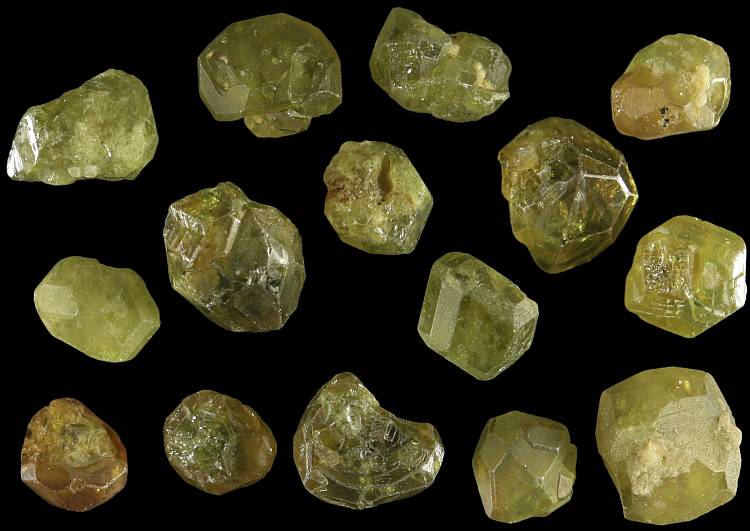Andradite is a member of the garnet group minerals.
There are two groups of garnets: pyralspites (Al-garnets) and ugrandites (Ca-garnets). Andradite is a member of the latter.
Here they are, the garnet group minerals:
| Mineral | Composition | Group |
| Pyrope | Mg3Al2(SiO4)3 | Pyralspite |
| Almandine | Fe3Al2(SiO4)3 | Pyralspite |
| Spessartine | Mn3Al2(SiO4)3 | Pyralspite |
| Grossular | Ca3Al2(SiO4)3 | Ugrandite |
| Andradite | Ca3Fe2(SiO4)3 | Ugrandite |
| Uvarovite | Ca3Cr2(SiO4)3 | Ugrandite |
Andradite occurs mostly in metamorphosed carbonate rocks which are known as skarns. These rocks have a variable mineralogy. Grossular (another Ca-garnet) may also occur in skarns, although not as frequently as andradite.

Andradite (demantoid) crystals. It is chromium partly in place of iron in the crystal lattice that gives a green color to demantoid. In most cases andradite is brownish. Width of view 30 mm.
http://picasaweb.google.com/107509377372007544953/Rocks#5851066645843439458
Andradite (brown) in a calc-silicate rock skarn with green diopside and white wollastonite. Willsboro, New York State, USA. Width of view 5 cm. TUG 1608-4877.
It forms when carbonates react with magmatic fluids that carry iron. The chemical reaction that is responsible for the formation of this mineral looks something like this:
3CaCO3 (calcite) + Fe2O3 (hematite) + 3SiO2 (quartz) → Ca3Fe2(SiO4)3 (andradite) + 3CO2 (carbon dioxide)
This needs not to go exactly like that and the environment is definitely much more complex. Hence, we have several other minerals (magnetite and pyroxenes, for example) forming at the same time.
It may sometimes form during the metamorphism of Ca-bearing (mafic) igneous rocks, especially varieties topazolite and demantoid form that way. So, it can be found in greenschists and serpentinites which are typical metamorphics formed at the expense of mafic igneous rocks.
There is even a third alternative. Sometimes dark-colored Ti-bearing varieties (melanite, schorlomite) may be found in rare alkaline and silica-deficient igneous rocks like nepheline syenite, phonolite, etc.
Andradite has an array of alternative names like colophonite, demantoid, topazolite, melanite, etc. (there are indeed many more of them). These usually have narrower meaning, but mineralogically they are all the same mineral. “Colophonite”, unfortunately, is a term that is sometimes used to describe vesuvianite also.
Leave a Reply